Growing Fennel at Home can seem daunting, but trust me, it’s easier than you think! Imagine stepping outside your back door and snipping fresh, fragrant fennel fronds to add a burst of anise-like flavor to your salads, soups, or even grilled fish. That’s the magic of home gardening, and with a few simple tricks, you can cultivate this culinary gem right in your own backyard.
Fennel has a rich history, dating back to ancient civilizations. The Romans prized it for its medicinal properties and culinary uses, believing it promoted longevity and good health. In some cultures, it was even thought to ward off evil spirits! While I can’t guarantee it will keep the ghosts away, I can promise that growing your own fennel will add a touch of history and deliciousness to your life.
Why should you bother with this DIY project? Well, store-bought fennel often lacks the vibrant flavor and freshness of homegrown varieties. Plus, growing fennel at home is incredibly rewarding. You’ll know exactly where your food comes from, and you’ll save money in the long run. This article is packed with easy-to-follow tips and tricks to help you succeed, even if you’re a complete beginner. So, grab your gardening gloves, and let’s get started!
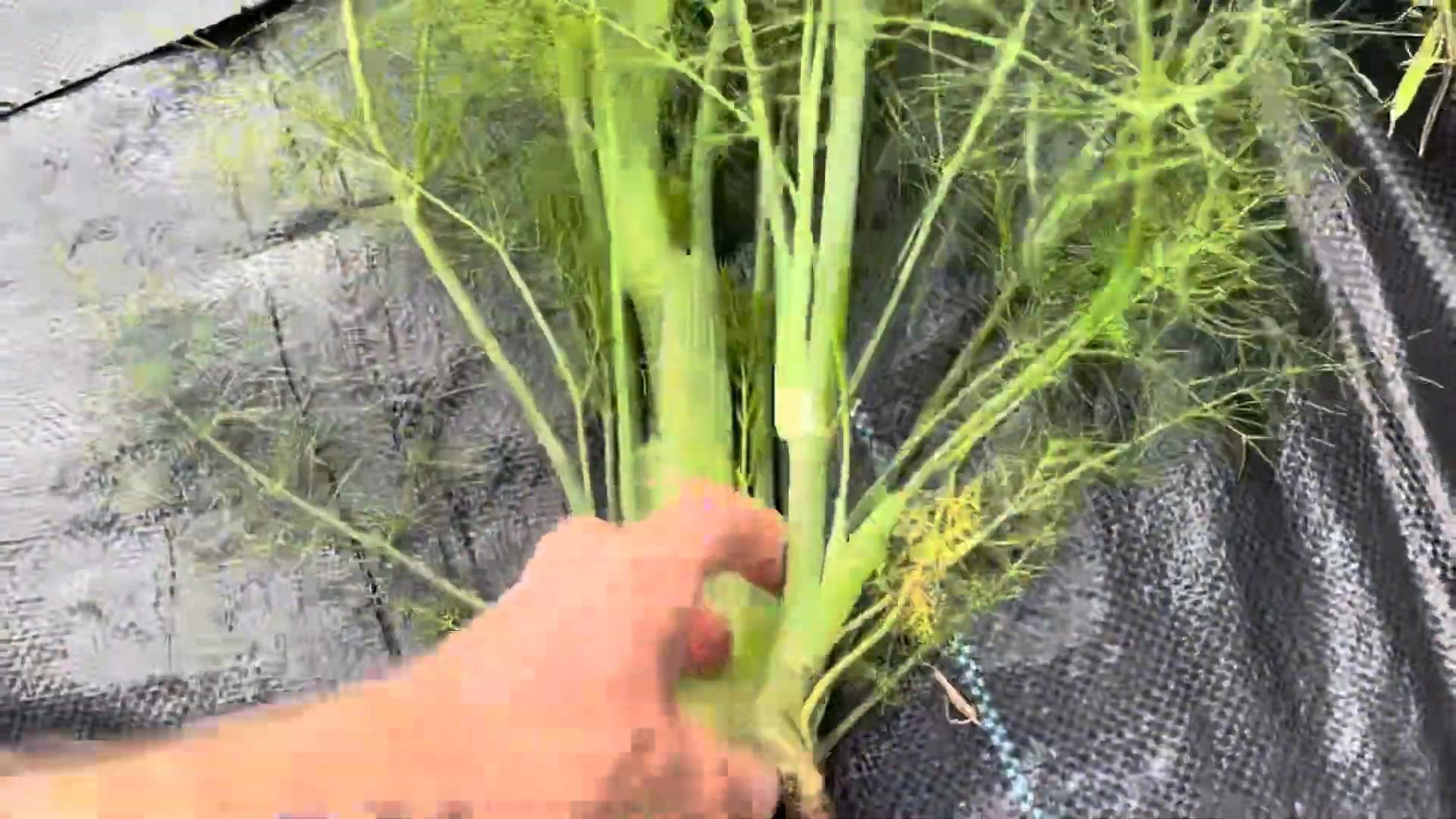
Growing Fennel at Home: A DIY Guide for Beginners
Hey there, fellow gardening enthusiasts! I’m so excited to share my experience and guide you through growing your own fennel at home. Fennel, with its feathery fronds and anise-like flavor, is a fantastic addition to any garden and kitchen. It’s surprisingly easy to grow, and I promise you’ll be enjoying fresh fennel in no time!
Understanding Fennel: A Quick Overview
Before we dive into the nitty-gritty, let’s quickly understand what we’re dealing with. There are two main types of fennel:
* **Bulb Fennel (Florence Fennel):** This is the one you’re probably most familiar with. It forms a bulbous base that you can eat raw in salads, roast, or braise.
* **Herb Fennel (Common Fennel):** This type doesn’t form a bulb. Instead, it’s grown for its leaves, seeds, and pollen, all of which have a strong anise flavor.
This guide will focus primarily on growing bulb fennel, but the initial steps for seed starting are similar for both types.
Choosing the Right Variety
Selecting the right variety is crucial for success. Here are a few popular bulb fennel varieties to consider:
* **’Florence’:** A classic and reliable choice.
* **’Romanesco’:** Known for its early maturity.
* **’Zefa Fino’:** A bolt-resistant variety, perfect for warmer climates.
When choosing, consider your local climate and growing season. Read the seed packet descriptions carefully to find a variety that suits your needs.
Getting Started: Seed Starting or Transplants?
You have two options for starting your fennel: sowing seeds directly in the garden or starting them indoors and transplanting them later. I personally prefer starting seeds indoors, especially if you have a short growing season.
Starting Seeds Indoors (My Preferred Method)
1. **Gather Your Supplies:** You’ll need seed starting trays or small pots, seed starting mix, fennel seeds, a spray bottle, and a grow light (optional, but highly recommended).
2. **Prepare the Seed Starting Mix:** Moisten the seed starting mix with water until it’s damp but not soggy.
3. **Sow the Seeds:** Fill the trays or pots with the moistened mix. Sow 2-3 fennel seeds per cell or pot, about ¼ inch deep.
4. **Cover and Water:** Gently cover the seeds with more seed starting mix and lightly mist with water using the spray bottle.
5. **Provide Warmth and Light:** Place the trays or pots in a warm location (around 70-75°F) and under a grow light if you have one. If not, a sunny windowsill will work, but be sure to rotate the trays regularly to prevent the seedlings from leaning towards the light.
6. **Keep the Soil Moist:** Keep the soil consistently moist, but not waterlogged. Check daily and mist with water as needed.
7. **Thin the Seedlings:** Once the seedlings emerge (usually within 7-14 days), thin them to one seedling per cell or pot. Choose the strongest seedling and gently snip off the others at the soil line.
8. **Harden Off the Seedlings:** Before transplanting the seedlings outdoors, you’ll need to “harden them off.” This process gradually acclimates them to outdoor conditions. Start by placing the seedlings outdoors in a sheltered location for an hour or two each day, gradually increasing the time over the course of a week.
Direct Sowing Seeds in the Garden
1. **Prepare the Soil:** Choose a sunny location with well-drained soil. Amend the soil with compost or other organic matter to improve its fertility and drainage.
2. **Sow the Seeds:** Sow the seeds directly into the soil, about ¼ inch deep and 2-3 inches apart.
3. **Water Gently:** Water the area gently to avoid disturbing the seeds.
4. **Keep the Soil Moist:** Keep the soil consistently moist until the seedlings emerge.
5. **Thin the Seedlings:** Once the seedlings are a few inches tall, thin them to 6-8 inches apart.
Transplanting Fennel Seedlings
Once your seedlings have been hardened off (or if you purchased transplants), it’s time to transplant them into the garden.
1. **Choose a Sunny Location:** Fennel needs at least 6 hours of sunlight per day.
2. **Prepare the Soil:** Make sure the soil is well-drained and amended with compost.
3. **Dig Holes:** Dig holes that are slightly larger than the root balls of the seedlings, spacing them 6-8 inches apart.
4. **Carefully Remove the Seedlings:** Gently remove the seedlings from their trays or pots, being careful not to damage the roots.
5. **Place the Seedlings in the Holes:** Place each seedling in a hole, making sure the top of the root ball is level with the surrounding soil.
6. **Fill the Holes and Water:** Fill the holes with soil and gently firm the soil around the base of the seedlings. Water thoroughly.
Caring for Your Fennel Plants
Now that your fennel plants are in the ground, it’s time to provide them with the care they need to thrive.
* **Watering:** Fennel needs consistent moisture, especially during hot, dry weather. Water deeply whenever the top inch of soil feels dry.
* **Fertilizing:** Fertilize your fennel plants every few weeks with a balanced fertilizer. I like to use a liquid seaweed fertilizer.
* **Weeding:** Keep the area around your fennel plants free of weeds. Weeds compete with fennel for nutrients and water.
* **Mulching:** Apply a layer of mulch around your fennel plants to help retain moisture, suppress weeds, and regulate soil temperature.
* **Earthing Up (for Bulb Fennel):** As the bulb starts to form, you can “earth up” the soil around it. This means gently mounding soil around the base of the bulb to blanch it and make it more tender.
* **Pest Control:** Fennel is generally pest-resistant, but aphids and slugs can sometimes be a problem. Check your plants regularly and take action if you see any pests. You can use insecticidal soap for aphids and slug bait for slugs.
* Bolting Prevention: Bolting is when the plant prematurely sends up a flower stalk, which can make the bulb tough and bitter. To prevent bolting, keep the soil consistently moist, provide shade during the hottest part of the day, and choose bolt-resistant varieties.
Harvesting Your Fennel
The time to harvest your fennel depends on the variety and your growing conditions.
* **Bulb Fennel:** You can harvest bulb fennel when the bulb is about the size of a tennis ball. To harvest, simply cut the bulb at the base with a sharp knife.
* **Herb Fennel:** You can harvest the leaves of herb fennel at any time. Simply snip off the leaves as needed. You can also harvest the seeds when they turn brown and dry.
Using Your Harvest
Now for the best part: enjoying the fruits (or rather, bulbs and leaves) of your labor!
* **Bulb Fennel:** You can eat bulb fennel raw in salads, roast it, braise it, or add it to soups and stews.
* **Herb Fennel:** You can use the leaves of herb fennel to flavor salads, soups, sauces, and fish dishes. The seeds can be used as a spice, and the pollen can be used as a garnish.
Troubleshooting Common Problems
Even with the best care, you might encounter some problems when growing fennel. Here are a few common issues and how to address them:
* **Bolting:** As mentioned earlier, bolting can be a problem, especially in hot weather. Prevent bolting by keeping the soil consistently moist, providing shade, and choosing bolt-resistant varieties.
* **Aphids:** Aphids are small, sap-sucking insects that can weaken your plants. Control aphids with insecticidal soap or by blasting them off with a strong stream of water.
* **Slugs:** Slugs can damage the leaves and bulbs of fennel plants. Control slugs with slug bait or by hand-picking them off the plants at night.
* **Yellowing Leaves:** Yellowing leaves can be a sign of overwatering, underwatering, or nutrient deficiency. Check the soil moisture and adjust your watering accordingly. Fertilize your plants with a balanced fertilizer to address nutrient deficiencies.
Saving Fennel Seeds
If you want to save seeds from your fennel plants, allow a few plants to flower and go to seed. Once the seeds turn brown and dry, harvest them and store them in a cool, dry place. Keep in mind that fennel can cross-pollinate with other members of the carrot family, so if you’re growing other plants in the same family, the seeds may not be true to type.
Final Thoughts
Growing fennel at home is a rewarding experience. With a little bit of care and attention, you can enjoy fresh, flavorful fennel all season long. So get out there and start planting! I’m confident you’
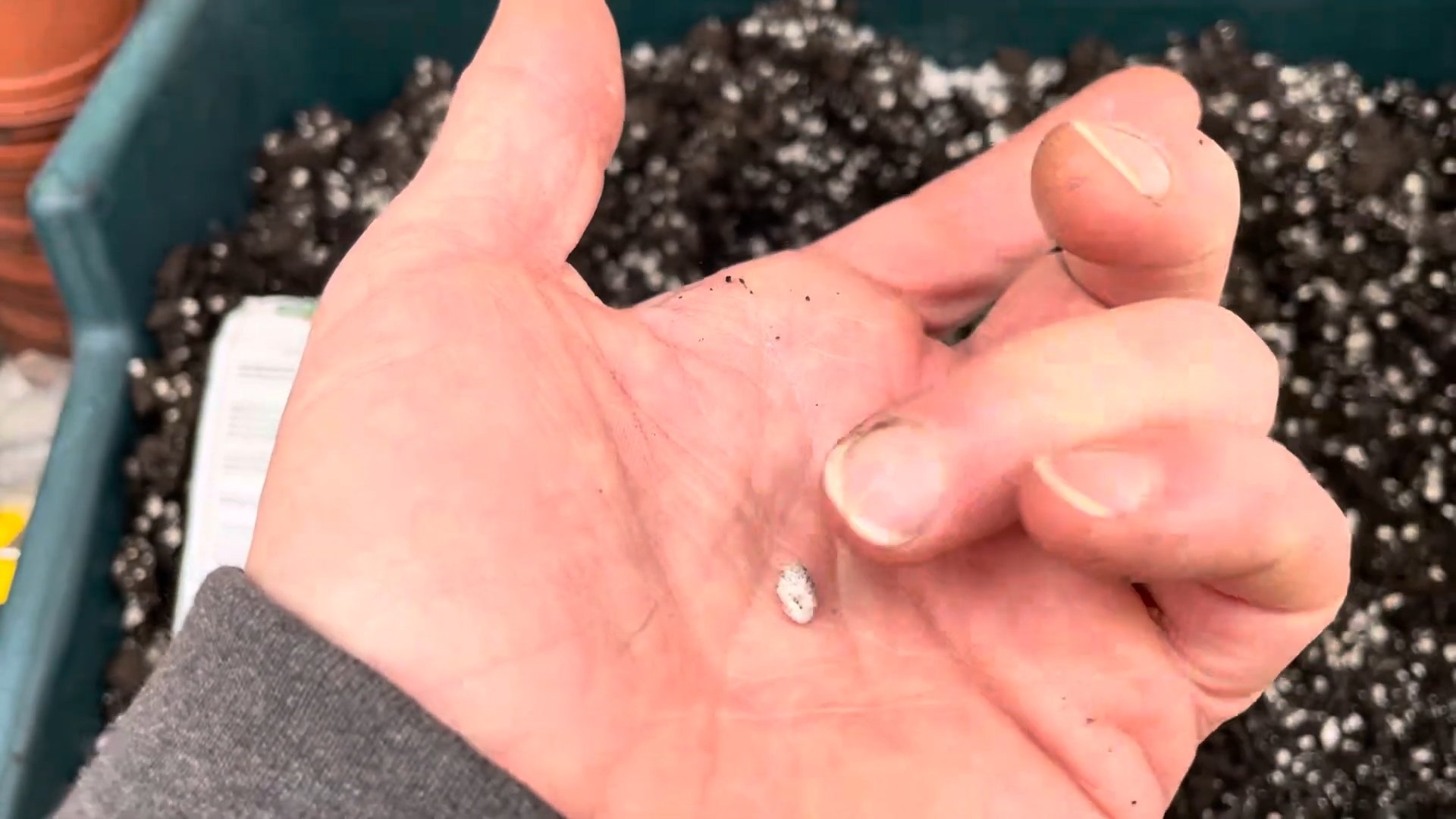
Conclusion
So, there you have it! Growing fennel at home is not only achievable, but it’s also a deeply rewarding experience that brings the fresh, anise-flavored goodness of this versatile herb and vegetable right to your fingertips. We’ve walked through the process, from selecting the right variety and preparing your garden bed to nurturing your plants and harvesting your bounty.
Why is this DIY trick a must-try? Because store-bought fennel simply can’t compare to the vibrant flavor and crisp texture of freshly harvested, homegrown fennel. You control the growing conditions, ensuring a pesticide-free and organically grown product. Plus, the satisfaction of nurturing a plant from seed to table is unparalleled. Imagine adding the delicate fronds to your salads, grilling the bulb for a smoky sweetness, or using the seeds to add a unique depth to your favorite dishes. The possibilities are endless!
Beyond the basics, there are several exciting variations you can explore. Consider growing different varieties of fennel. ‘Florence’ fennel is prized for its bulb, while ‘Bronze’ fennel adds a beautiful ornamental touch to your garden with its feathery, dark foliage. You can also experiment with companion planting. Fennel pairs well with dill and chamomile, attracting beneficial insects to your garden and enhancing the overall ecosystem.
Don’t be afraid to get creative in the kitchen, too! Use the fennel fronds to make a pesto, infuse olive oil with the seeds for a flavorful drizzle, or add the chopped bulb to soups and stews for a subtle anise flavor. You can even pickle the bulb for a tangy and refreshing treat.
We understand that gardening can sometimes feel daunting, but growing fennel is surprisingly straightforward, even for beginners. With a little patience and attention, you’ll be enjoying the fruits (or rather, the bulbs and fronds) of your labor in no time.
We wholeheartedly encourage you to give this DIY trick a try. Start small, perhaps with just a few plants, and see how it goes. The rewards are well worth the effort. And most importantly, we want to hear about your experiences! Share your successes, your challenges, and your favorite ways to use your homegrown fennel in the comments below. Let’s create a community of fennel enthusiasts and learn from each other. Happy growing!
Frequently Asked Questions (FAQ)
What are the best conditions for growing fennel?
Fennel thrives in full sun, requiring at least 6-8 hours of direct sunlight per day. It prefers well-drained soil that is rich in organic matter. The ideal soil pH is between 6.0 and 7.0. Consistent moisture is important, especially during bulb development, but avoid overwatering, which can lead to root rot.
How long does it take for fennel to grow?
From seed to harvest, fennel typically takes around 90-115 days. The bulb is usually ready to harvest when it reaches the size of a tennis ball. The fronds can be harvested at any time once the plant is established.
Can I grow fennel in containers?
Yes, fennel can be successfully grown in containers, especially if you are limited on garden space. Choose a large container, at least 12 inches in diameter and depth, to accommodate the plant’s root system. Use a high-quality potting mix and ensure the container has good drainage. Container-grown fennel may require more frequent watering than plants grown in the ground.
Is fennel a perennial or an annual?
Fennel is technically a short-lived perennial in warmer climates (zones 6-10), meaning it can live for more than two years. However, it is often grown as an annual, especially in colder regions, as the bulb tends to bolt (flower) in its second year, which can affect its flavor and texture.
How do I prevent fennel from bolting?
Bolting is often triggered by heat stress. To prev
So, there you have it! Growing fennel at home is not only achievable, but it’s also a deeply rewarding experience that brings the fresh, anise-flavored goodness of this versatile herb and vegetable right to your fingertips. We’ve walked through the process, from selecting the right variety and preparing your garden bed to nurturing your plants and harvesting your bounty.
Why is this DIY trick a must-try? Because store-bought fennel simply can’t compare to the vibrant flavor and crisp texture of freshly harvested, homegrown fennel. You control the growing conditions, ensuring a pesticide-free and organically grown product. Plus, the satisfaction of nurturing a plant from seed to table is unparalleled. Imagine adding the delicate fronds to your salads, grilling the bulb for a smoky sweetness, or using the seeds to add a unique depth to your favorite dishes. The possibilities are endless!
Beyond the basics, there are several exciting variations you can explore. Consider growing different varieties of fennel. ‘Florence’ fennel is prized for its bulb, while ‘Bronze’ fennel adds a beautiful ornamental touch to your garden with its feathery, dark foliage. You can also experiment with companion planting. Fennel pairs well with dill and chamomile, attracting beneficial insects to your garden and enhancing the overall ecosystem.
Don’t be afraid to get creative in the kitchen, too! Use the fennel fronds to make a pesto, infuse olive oil with the seeds for a flavorful drizzle, or add the chopped bulb to soups and stews for a subtle anise flavor. You can even pickle the bulb for a tangy and refreshing treat.
We understand that gardening can sometimes feel daunting, but growing fennel is surprisingly straightforward, even for beginners. With a little patience and attention, you’ll be enjoying the fruits (or rather, the bulbs and fronds) of your labor in no time.
We wholeheartedly encourage you to give this DIY trick a try. Start small, perhaps with just a few plants, and see how it goes. The rewards are well worth the effort. And most importantly, we want to hear about your experiences! Share your successes, your challenges, and your favorite ways to use your homegrown fennel in the comments below. Let’s create a community of fennel enthusiasts and learn from each other. Happy growing!
Frequently Asked Questions (FAQ)
What are the best conditions for growing fennel?
Fennel thrives in full sun, requiring at least 6-8 hours of direct sunlight per day. It prefers well-drained soil that is rich in organic matter. The ideal soil pH is between 6.0 and 7.0. Consistent moisture is important, especially during bulb development, but avoid overwatering, which can lead to root rot.
How long does it take for fennel to grow?
From seed to harvest, fennel typically takes around 90-115 days. The bulb is usually ready to harvest when it reaches the size of a tennis ball. The fronds can be harvested at any time once the plant is established.
Can I grow fennel in containers?
Yes, fennel can be successfully grown in containers, especially if you are limited on garden space. Choose a large container, at least 12 inches in diameter and depth, to accommodate the plant’s root system. Use a high-quality potting mix and ensure the container has good drainage. Container-grown fennel may require more frequent watering than plants grown in the ground.
Is fennel a perennial or an annual?
Fennel is technically a short-lived perennial in warmer climates (zones 6-10), meaning it can live for more than two years. However, it is often grown as an annual, especially in colder regions, as the bulb tends to bolt (flower) in its second year, which can affect its flavor and texture.
How do I prevent fennel from bolting?
Bolting is often triggered by heat stress. To prevent bolting, ensure your fennel plants receive consistent moisture, especially during hot weather. Provide some afternoon shade if possible. Choose bolt-resistant varieties if you live in a hot climate. Harvesting the bulb promptly when it reaches maturity can also help prevent bolting.
What are some common pests and diseases that affect fennel?
Fennel is generally resistant to many pests and diseases. However, aphids, slugs, and snails can sometimes be a problem. Aphids can be controlled with insecticidal soap or a strong blast of water. Slugs and snails can be handpicked or trapped. Root rot can occur in poorly drained soil.
Can I eat the entire fennel plant?
Yes, the entire fennel plant is edible! The bulb is the most commonly used part, but the fronds, stalks, and seeds are also delicious. The fronds have a delicate anise flavor and can be used as a garnish or added to salads. The stalks can be used in soups and stews. The seeds have a stronger anise flavor and can be used as a spice.
How do I harvest fennel seeds?
To harvest fennel seeds, allow the flower heads to dry completely on the plant. Once the seed heads are dry and brown, cut them off and place them in a paper bag. Shake the bag to release the seeds. Remove any debris and store the seeds in an airtight container in a cool, dark place.
Does fennel attract beneficial insects?
Yes, fennel is a great plant for attracting beneficial insects to your garden, such as ladybugs, lacewings, and hoverflies, which prey on aphids and other pests. It also attracts pollinators like bees and butterflies.
Can I grow fennel near other vegetables?
Fennel can inhibit the growth of some plants, so it’s best to plant it away from dill, tomatoes, beans, and kohlrabi. It grows well with chamomile and rosemary. Consider companion planting to maximize the benefits of your garden.

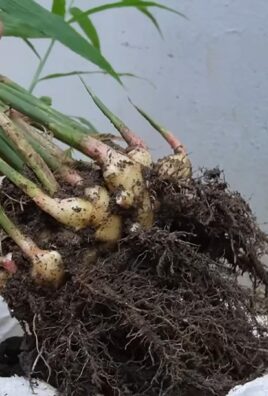
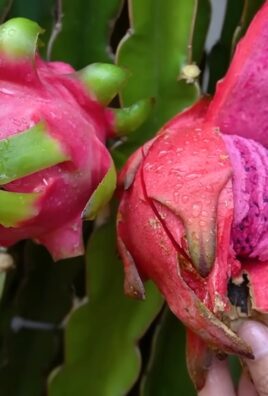
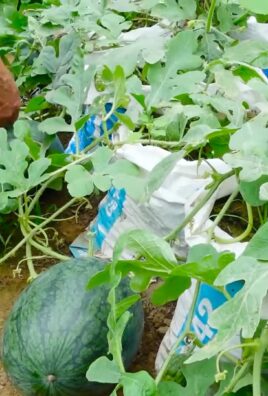
Leave a Comment